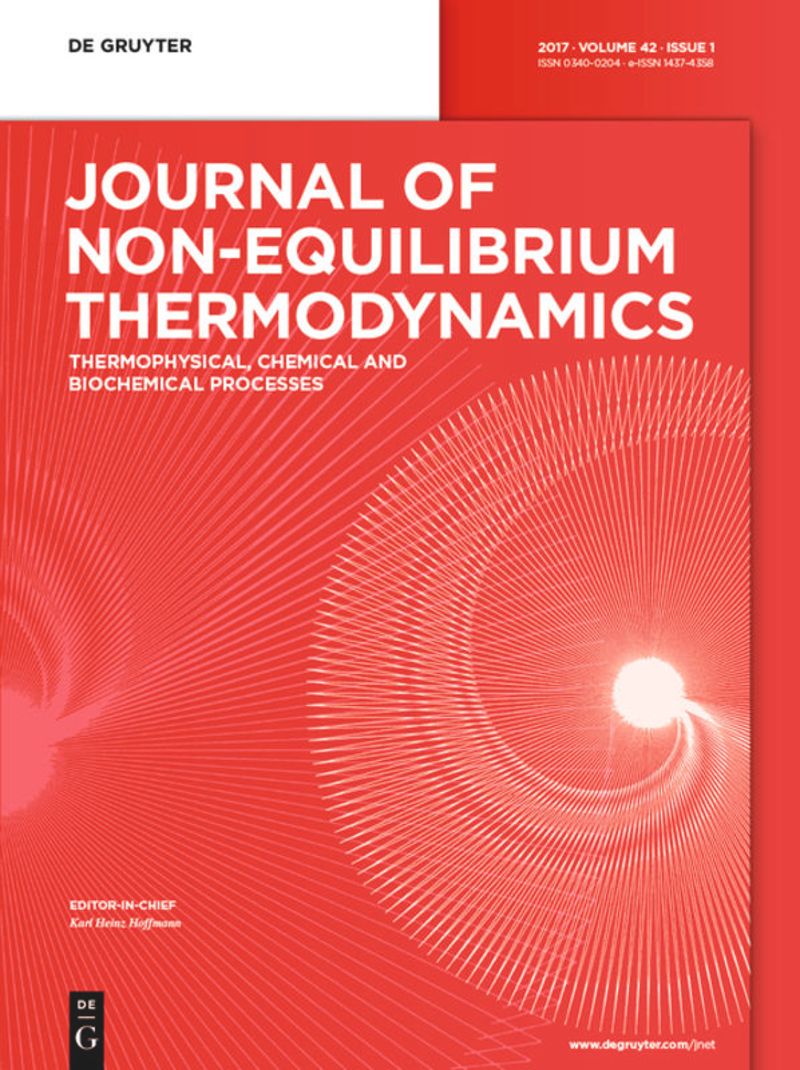Effect of Cross-Sectional Geometry on Hydrothermal Behavior of Microchannel Heat Sink
IF 4.3
3区 工程技术
Q1 MECHANICS
引用次数: 4
Abstract
Abstract The aim of this paper is to numerically analyze the hydrothermal behavior of different cross-sectional geometries of microchannel heat sinks (MCHSs) and conduct a comparative analysis of traditional and non-traditional designs using ANSYS Fluent. It is expected that the proposed design discussed in this paper will improve the performance of MCHSs by maximizing the cooling capability and minimizing the thermal resistance and entropy generation rate, thus leading to better energy efficiency. The channel designs include a rectangular microchannel (RMC), a circular microchannel (CMC), an elliptical microchannel (EMC), a trapezoidal microchannel (TMC), a hexagonal microchannel (HMC), and a new microchannel (NMC) which has a plus-like shape. The discussed geometry of the NMC is designed in such a way that it maximizes the cross-sectional area and the wetted perimeter of the channel, keeping the hydraulic diameter constant ( D h = 412{D_{h}}=412 µm). The performance of various channels is compared on the basis of pressure drop, wall temperature, thermal enhancement factor, thermal resistance, thermal transport efficiency, and entropy generation rates. It has been observed that the NMC is capable of cooling effectively and it can achieve a minimum wall temperature of 305 K, thus offering the lowest thermal resistance ( R th {R_{\mathrm{th}}}), irreversible heat loss, and entropy generation rate. Moreover, the NMC has achieved the highest value of the thermal enhancement factor, i. e., 1.13, at Re = 1 , 000\mathrm{Re}=1,000. Similarly, it has the highest thermal transport efficiency of almost 97 % at Re = 1 , 000\mathrm{Re}=1,000, followed by the TMC and the RMC. Overall, the NMC has achieved the best performance in all aspects, followed by the RMC and TMC. The performance of the EMC, the CMC, and the HMC was found to be the worst in this study.截面几何形状对微通道散热器水热行为的影响
摘要本文的目的是数值分析微通道散热器(MCHS)不同截面几何形状的水热行为,并使用ANSYS Fluent对传统和非传统设计进行比较分析。预计本文所讨论的设计将通过最大化冷却能力、最小化热阻和熵产生率来提高MCHS的性能,从而提高能效。通道设计包括矩形微通道(RMC)、圆形微通道(CMC)、椭圆形微通道(EMC)、梯形微通道(TMC)、六边形微通道(HMC)和具有加号形状的新微通道(NMC)。所讨论的NMC的几何形状设计为使通道的横截面积和润湿周长最大化,同时保持水力直径恒定(D h=412{D_{h}}=412 µm)。根据压降、壁温、热增强因子、热阻、热传输效率和熵产生率对各种通道的性能进行了比较。据观察,NMC能够有效冷却,其最低壁温可达305 K、 从而提供最低的热阻(Rth{R_{\mathrm{th}})、不可逆热损失和熵产生率。此外,NMC实现了热增强因子i的最高值。 e.,1.13,当Re=1000时。同样,它的热传输效率最高,几乎达到97 % 在Re=1000\mathrm{Re}=1000,然后是TMC和RMC。总体而言,NMC在各个方面都取得了最佳性能,其次是RMC和TMC。在本研究中,EMC、CMC和HMC的性能最差。
本文章由计算机程序翻译,如有差异,请以英文原文为准。
求助全文
约1分钟内获得全文
求助全文
来源期刊
CiteScore
9.10
自引率
18.20%
发文量
31
审稿时长
1 months
期刊介绍:
The Journal of Non-Equilibrium Thermodynamics serves as an international publication organ for new ideas, insights and results on non-equilibrium phenomena in science, engineering and related natural systems. The central aim of the journal is to provide a bridge between science and engineering and to promote scientific exchange on a) newly observed non-equilibrium phenomena, b) analytic or numeric modeling for their interpretation, c) vanguard methods to describe non-equilibrium phenomena.
Contributions should – among others – present novel approaches to analyzing, modeling and optimizing processes of engineering relevance such as transport processes of mass, momentum and energy, separation of fluid phases, reproduction of living cells, or energy conversion. The journal is particularly interested in contributions which add to the basic understanding of non-equilibrium phenomena in science and engineering, with systems of interest ranging from the macro- to the nano-level.
The Journal of Non-Equilibrium Thermodynamics has recently expanded its scope to place new emphasis on theoretical and experimental investigations of non-equilibrium phenomena in thermophysical, chemical, biochemical and abstract model systems of engineering relevance. We are therefore pleased to invite submissions which present newly observed non-equilibrium phenomena, analytic or fuzzy models for their interpretation, or new methods for their description.

 求助内容:
求助内容: 应助结果提醒方式:
应助结果提醒方式:


